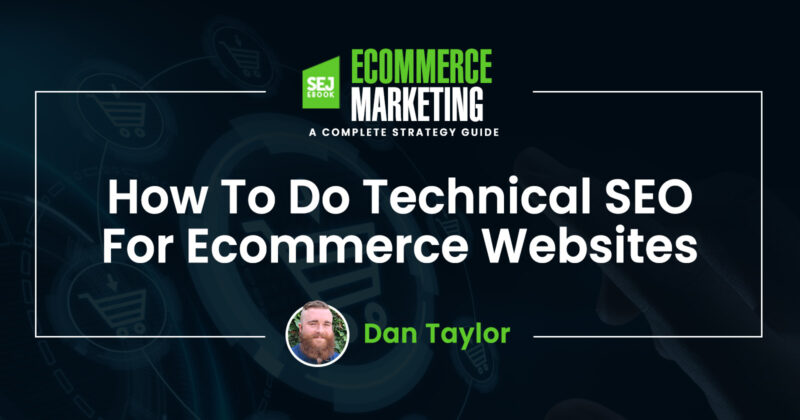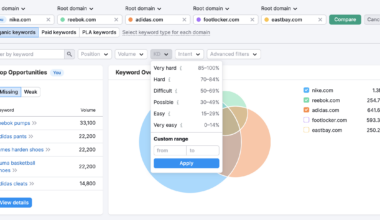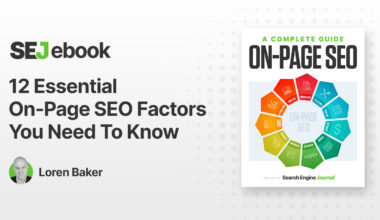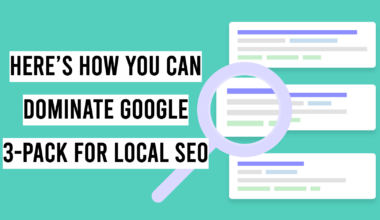Introduction to SEO for E-commerce Websites
As more and more businesses move online, the competition for e-commerce websites to rank higher on search engines has become increasingly fierce. SEO, or Search Engine Optimization, is the process of optimizing your website so that it ranks higher on search engine results pages (SERPs), and drives more traffic to your website.
For e-commerce websites, SEO is crucial in driving traffic and sales to your website. By optimizing your website for search engines, you increase the visibility of your products and services to potential customers. However, SEO for e-commerce websites comes with its own set of unique challenges, such as managing large product inventories, optimizing category pages, and ensuring a smooth user experience.
To get started with SEO for your e-commerce website, it’s important to understand the basics of keyword research, on-page and off-page optimization, and technical SEO. By implementing these strategies, you can improve your website’s ranking on search engines, and ultimately drive more traffic and sales to your online store.
In the following sections, we’ll explore these strategies in greater detail, and provide tips and best practices for implementing them on your e-commerce website. By following these guidelines, you’ll be well on your way to improving your website’s visibility and driving more sales.
Keyword Research for E-commerce SEO
Keyword research is the foundation of any successful SEO strategy, and it’s no different for e-commerce websites. It involves identifying the keywords and phrases that potential customers are typing into search engines to find products similar to yours. By optimizing your website for these keywords, you can improve your website’s ranking on search engine results pages, and drive more relevant traffic to your website.
Here are some tips for conducting keyword research for your e-commerce website:
1. Start with a broad list of keywords: Begin by brainstorming a list of keywords related to your products and services. This can include product names, categories, and industry-specific terms. Use tools like Google Keyword Planner, SEMrush, or Ahrefs to expand your list and identify new keywords.
2. Analyze search volume and competition: Once you have a list of potential keywords, use keyword research tools to analyze their search volume and competition. Look for keywords with high search volume and low competition, as these are the most valuable keywords to target.
3. Consider long-tail keywords: Long-tail keywords are longer, more specific phrases that are less competitive but often have higher conversion rates. For example, “men’s running shoes” is a broad keyword, while “best men’s running shoes for flat feet” is a long-tail keyword.
4. Analyze competitor keywords: Look at your competitors’ websites and identify the keywords they are targeting. This can give you valuable insights into what keywords and phrases are working in your industry.
5. Use keyword research to optimize your website: Once you have identified your target keywords, use them to optimize your website’s content. This includes optimizing product descriptions, category pages, and meta data.
By conducting thorough keyword research and optimizing your website for your target keywords, you can improve your website’s visibility on search engines and drive more relevant traffic to your e-commerce website.
On-page Optimization Techniques for E-commerce Websites
On-page optimization refers to the process of optimizing the content and structure of your website’s pages to improve their visibility on search engines. Here are some on-page optimization techniques specifically for e-commerce websites:
1. Optimize product pages: Your product pages should be optimized for both search engines and users. This includes using descriptive and unique product titles and descriptions, optimizing product images with alt text, and providing clear and easy-to-use navigation.
2. Use schema markup: Schema markup is a type of code that helps search engines understand the content on your website. By using schema markup, you can improve your website’s visibility on search engine results pages and provide more information to potential customers.
3. Optimize category pages: Category pages are an important part of e-commerce websites, as they help customers navigate to the products they are interested in. Make sure your category pages are optimized with descriptive and unique titles and descriptions, and include relevant keywords.
4. Improve site speed: Site speed is an important factor in both user experience and SEO. Make sure your website is optimized for fast load times by compressing images, minimizing HTTP requests, and using a content delivery network (CDN).
5. Use internal linking: Internal linking refers to linking between pages on your website. By using internal linking, you can improve the user experience and help search engines understand the structure of your website.
6. Optimize meta data: Meta data refers to the title and description tags that appear in search engine results pages. Make sure your meta data is optimized with relevant keywords and provides a clear and concise description of your website’s content.
By implementing these on-page optimization techniques, you can improve your website’s visibility on search engines and provide a better user experience for potential customers.
Off-page Optimization Strategies for E-commerce SEO
Off-page optimization refers to the strategies used outside of your website to improve its visibility on search engines and drive more traffic to your e-commerce website. Here are some off-page optimization strategies specifically for e-commerce websites:
1. Build quality backlinks: Backlinks are links from other websites that point to your website. Quality backlinks from reputable websites can improve your website’s authority and visibility on search engines. Reach out to industry influencers, bloggers, and other websites to request backlinks to your website.
2. Use social media: Social media platforms like Facebook, Twitter, and Instagram provide a way to engage with potential customers and drive traffic to your website. Share your products and promotions on social media, and encourage followers to share your content with their networks.
3. Utilize influencer marketing: Influencer marketing involves partnering with influential people in your industry to promote your products and services. Find influencers in your industry and collaborate with them to create content and promotions that drive traffic to your website.
4. Participate in online communities: Online communities like forums and discussion boards provide an opportunity to engage with potential customers and promote your products. Join relevant online communities and participate in discussions related to your industry.
5. Use email marketing: Email marketing is a powerful way to reach potential customers and promote your products. Build an email list of interested customers and send regular newsletters and promotional emails that drive traffic to your website.
6. Offer promotions and discounts: Offering promotions and discounts can be an effective way to attract new customers and drive traffic to your website. Use social media, email marketing, and other channels to promote your promotions and encourage customers to visit your website.
By implementing these off-page optimization strategies, you can improve your website’s visibility on search engines and drive more relevant traffic to your e-commerce website. Remember to prioritize quality over quantity when it comes to backlinks and focus on building relationships with influencers and potential customers in your industry.
Technical SEO for E-commerce Websites
Technical SEO refers to the process of optimizing the technical aspects of your website to improve its visibility on search engines and provide a better user experience for potential customers. Here are some technical SEO strategies specifically for e-commerce websites:
1. Optimize for mobile: With more and more people using their smartphones to shop online, it’s crucial that your e-commerce website is optimized for mobile devices. Use responsive design to ensure your website looks great and functions well on any device.
2. Improve site speed: Site speed is an important factor in both user experience and SEO. Make sure your website is optimized for fast load times by compressing images, minimizing HTTP requests, and using a content delivery network (CDN).
3. Use structured data: Structured data is a type of code that helps search engines understand the content on your website. By using structured data, you can improve your website’s visibility on search engine results pages and provide more information to potential customers.
4. Implement HTTPS: HTTPS is a secure version of HTTP, and it’s becoming increasingly important for e-commerce websites. Implementing HTTPS can improve your website’s security and provide a better user experience for potential customers.
5. Optimize for local search: If you have a physical store, it’s important to optimize your website for local search. This includes creating a Google My Business listing, optimizing your website for local keywords, and building local backlinks.
6. Use canonical tags: Canonical tags are a type of code that tells search engines which version of a page is the preferred version. Use canonical tags to avoid duplicate content issues and improve your website’s visibility on search engines.
7. Optimize for site architecture: Site architecture refers to the structure of your website, including its URLs, categories, and navigation. Make sure your website is well-organized and easy to navigate, both for users and search engines.
By implementing these technical SEO strategies, you can improve your website’s visibility on search engines and provide a better user experience for potential customers. Remember to prioritize user experience and security when it comes to technical SEO, as these factors are becoming increasingly important for e-commerce websites.
Final Thoughts on E-commerce SEO
SEO for e-commerce websites can be a challenging and complex process, but it’s essential for driving traffic and sales to your online store. By implementing the strategies outlined in this article, you can improve your website’s visibility on search engines and provide a better user experience for potential customers.
Remember to prioritize keyword research, on-page and off-page optimization, and technical SEO when optimizing your e-commerce website. Conduct thorough keyword research to identify the most valuable keywords to target, and optimize your website’s content and structure to improve its visibility on search engines.
Off-page optimization strategies like building quality backlinks, using social media, and participating in online communities can help drive more traffic to your website and improve its authority on search engines. Technical SEO strategies like optimizing for mobile, improving site speed, and implementing HTTPS can improve your website’s security and user experience.
Ultimately, the key to successful e-commerce SEO is to prioritize user experience and provide valuable, high-quality content that meets the needs of potential customers. By implementing these strategies and continually monitoring and adjusting your SEO efforts, you can improve your website’s visibility on search engines and drive more traffic and sales to your online store.






















